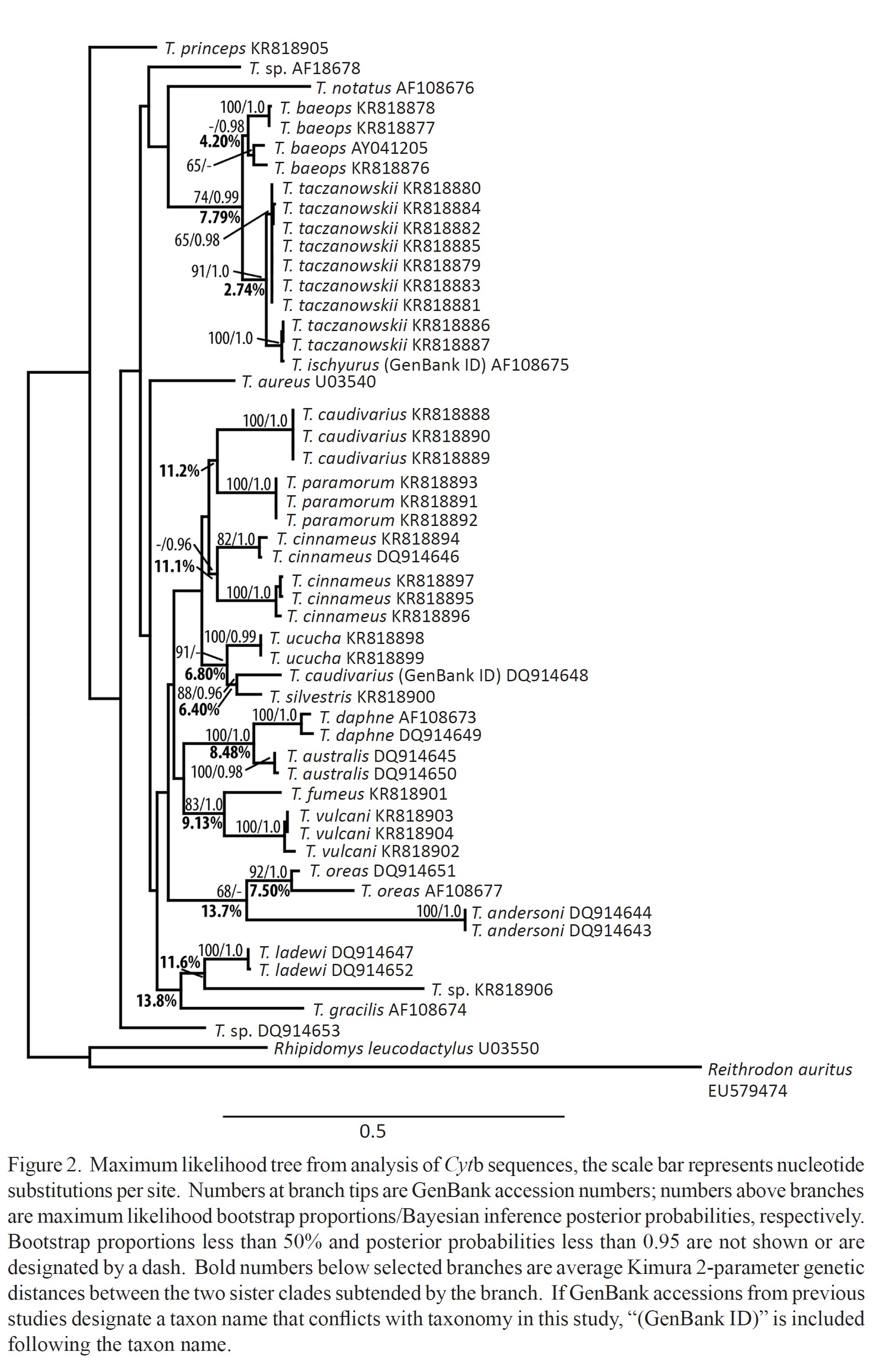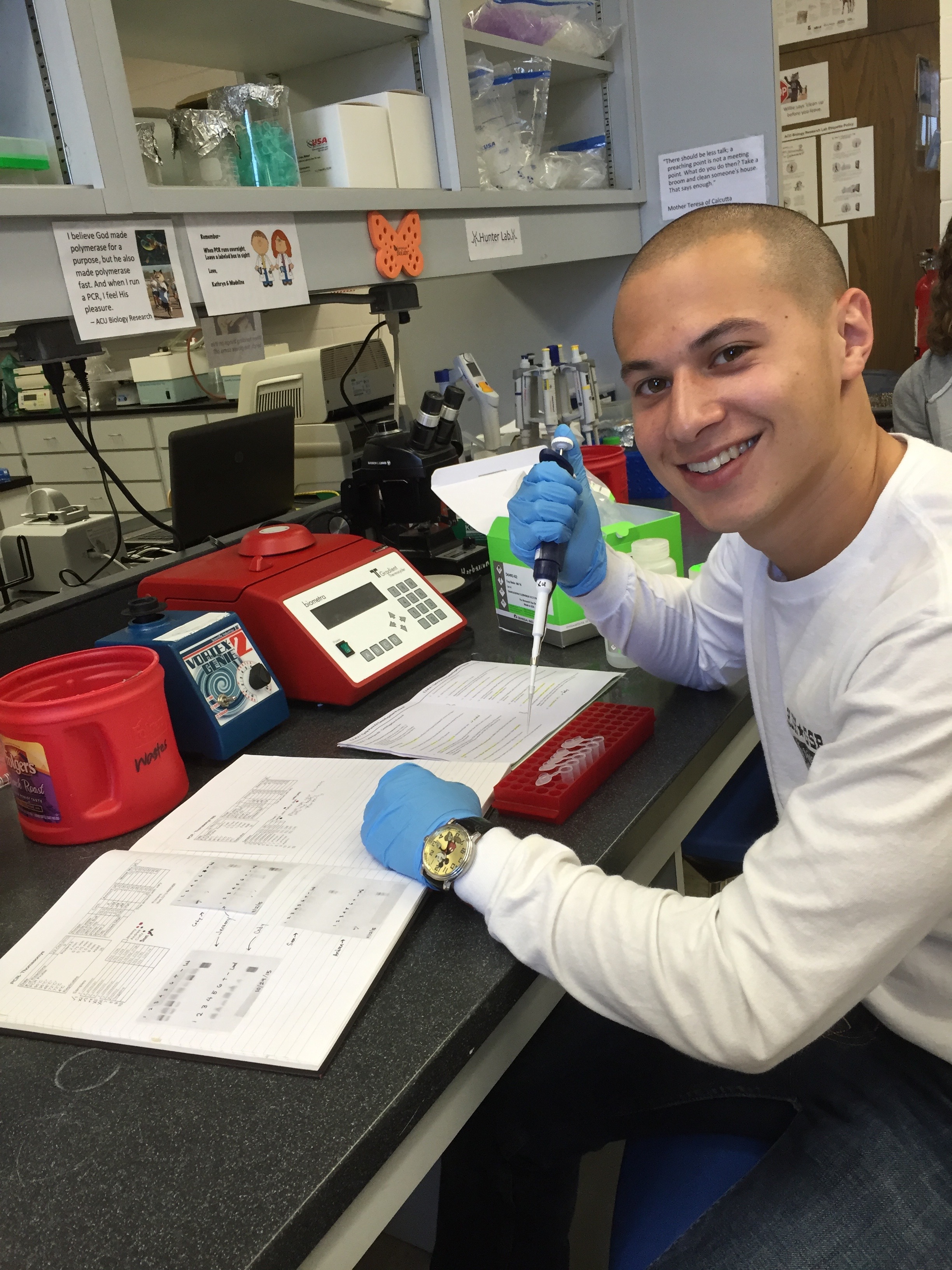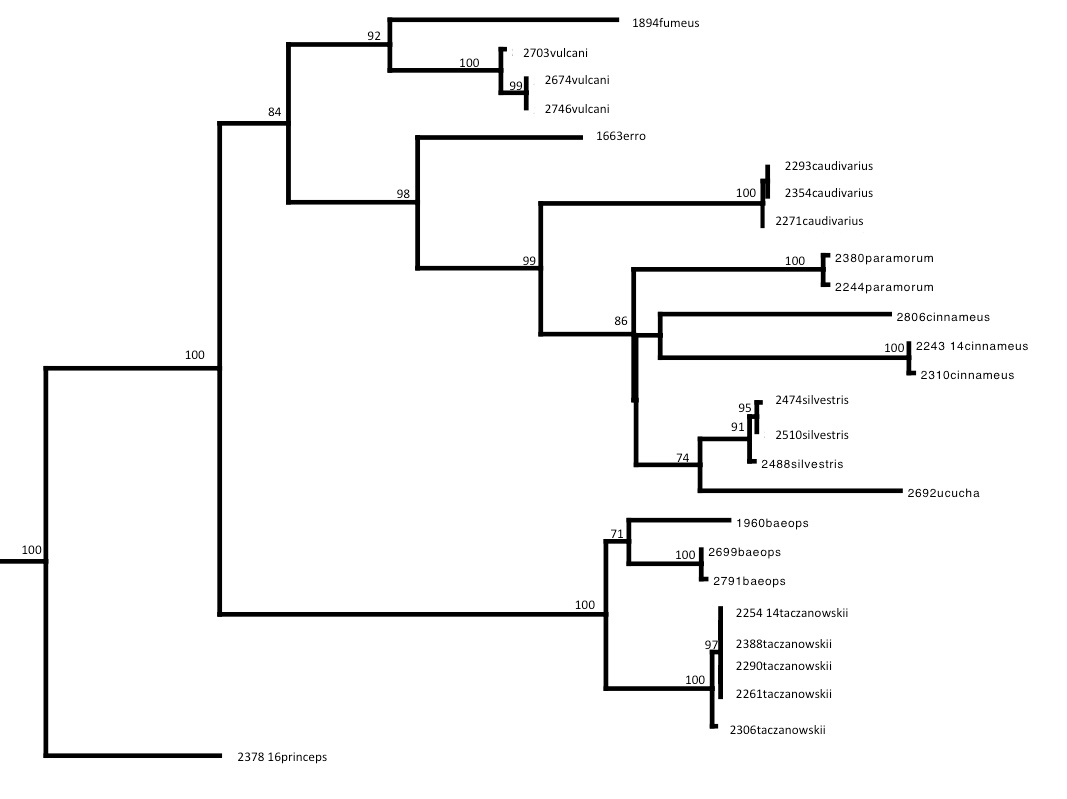My research experience with the biology department has certainly been a memorable part of my time here at ACU. Starting in January, I jumped in on a project of Dr. Lee’s, a portion of which he delegated to Dr. Brokaw – the continuous updating of an exhaustive taxonomic tree of a rodent genus living in Ecuador named Thomasomys. This genus of mammals living in Andes Mountains has undergone rapid adaptive radiation, occupying a variety of niches, differing in climate and elevation. Dr. Lee and Dr. Brokaw are attempting to piece together the evolutionary relationships among species within this genus.
Here are pictures of our phylogenetic trees from two different genes, cytochrome b and CO1 (both mitochondrial).

This image includes DNA we sequenced in the spring of 2015 and was featured in a publication by Dr. Lee and Rachel Ritchie. Before getting included in publications, any DNA we sequence is submitted to GenBank and becomes accessible to researchers worldwide.
These are our results after the meticulous processes of running PCRs, gel electrophoresis, DNA purification, DNA quantification by NanoDrop, and sequence editing and alignment. During my participation in this project, we added two new species to our trees, T. ucucha and T. rhoadsi, found out that T. cinnameus may actually consist of two different species, and elucidated the confusing geographic distributions of the closely related sister species, T. baeops and T. taczanowskii.
Although the principal goal of the project isn’t entirely fascinating to me nor directly relevant to my future career, the experience I’ve gained working in the lab is something that I can take with me for the rest of my life. Extracting DNA, using a thermal cycler during the PCR process, running an electrophoresis gel, purifying DNA, and editing sequences have all been extremely useful techniques that I’ve learned. It’s also been fun getting to work with fellow classmates, and I learned a lot from other students like Tina Johnson, who was Dr. Brokaw’s lab mentor in the spring. Also, presenting at the ACU Research Festival was a fantastic experience, even though it was a little nerve-wracking.
One of the difficulties that I initially came across was the fact that I had no idea what was going on scientifically when I first started. I didn’t even know what “PCR” stood for until the day before presenting at the festival [The polymerase chain reaction is used to replicate DNA]. Creating a “master mix” for the PCR and loading the gel are meticulous processes that require complete focus, and I made silly errors at first because I wasn’t careful enough. This semester, my group had to repeat two steps, PCR and gel electrophoresis, multiple times, and it felt a little rote at times. We made a lot more progress in the spring semester, probably because the goal of presenting at the ACU Research Festival was more imminent. I also learned that research doesn’t turn out the way you plan it a lot of times – things go wrong more often than expected, like the way our PCR’s have turned out this semester.
Doing research while taking classes such as Cell Biology, Biostatistics, and General Biology II is a great way to apply what you’ve learned in a hands-on way. It’s also a great way to get to know the professor that you’re working for and to have the opportunity to ask him or her questions outside of the classroom. I believe that doing research for the biology department at ACU is an experience you don’t want to miss.


